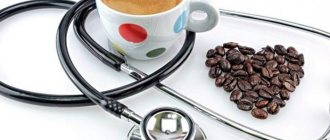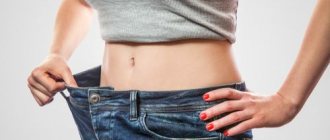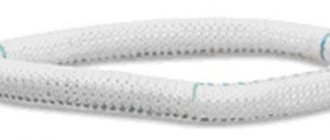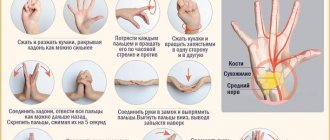How does water affect blood pressure (BP)?
You can find conflicting data about its effect on it.
Some doctors recommend using it for hypertension, others for hypotension. Both options have a right to exist, since water can both cause an increase in blood pressure levels and reduce it. The main mechanisms of its influence:
Through pressure receptors: when the filling of blood vessels with water increases, they expand. But a rapid increase in blood volume can lead to a narrowing of their lumen.- In response to insufficient blood supply to the brain, with dehydration, pressure in the vessels increases (ischemic reaction).
- Compounds dissolved in water act on the chemical receptors of blood vessels: when there is a lack of oxygen in the bloodstream and an excess of carbon dioxide, they relax.
Lactate (a substance that acidifies the blood) affects them in the same way. It is removed dissolved in water. Lactate is produced during exercise. Carbon dioxide is the result of chemical reactions in the body with the participation of oxygen and is released during respiration. - Through the level of elements in the water that enter the food and then into the blood. When sodium increases, vasoconstriction occurs. This also occurs when the amount of calcium and magnesium decreases. The level of potassium affects in two directions at once: at normal levels it causes dilation of blood vessels, and at its excess it causes a decrease in their lumen.
- Through the level of insulin (a hormone that affects the flow of sugars into cells). As it grows, the lumen of vessels of renal origin decreases, and norepinephrine (one of the stress hormones) increases. Its amount is inversely proportional to the water supply.
- Through regulation by the kidneys: with a decrease in pressure, the excretion of water and, accordingly, salt dissolved in it decreases. This entails his increase.
There are other mechanisms for regulating blood pressure, but they are less tied to the amount and composition of water consumed.
Consumption rate
It is very important to avoid dehydration so that the ischemic and renal mechanisms for regulating blood pressure do not become involved. To do this, you need to consume its normal amount. Each person has their own norm.
It is defined:
- floor;
- age;
- physical activity;
- air temperature (climate and time of year).
The exact value can be calculated using a special calculator or by multiplying the weight by 0.03 liters.
You can also determine the ideal amount of H2O by monitoring blood pressure readings or by the color of your urine (it should not be too dark and not too light).
American scientists have established the average value of water consumption at 1.5 liters for people leading a sedentary lifestyle and 2 liters for physically active individuals.
Water can remove medications from the body, so excess is harmful.
What water and drinks are most beneficial for hypertension?
There are many myths circulating among people and on the Internet about the magical properties of spring, “live” or melt water, about wonderful springs, about famous balneological resorts in Russia and abroad. What do authoritative doctors say, which water is the healthiest for hypertensive patients?
- Regular tap water that has undergone proper purification is the simplest, healthiest and most affordable option. Water quality is assessed according to GOST 2874-82 “Drinking Water”, standards, and sanitary rules. Alas, not in all regions of Russia the quality of tap water meets the standards... Use a filter if necessary! To boil or not to boil? The decision is yours: supporters and opponents of boiling are ready to bombard you with “killer” arguments, but in fact the difference is not as fundamental as they think.
- Bottled drinking water: if you are confident in the manufacturer, then this is a great option! However, there is always a risk of buying a bottle with contents of questionable purity from an unscrupulous manufacturer.
- No one disputes the benefits of mineral water, but it contains high concentrations of salts, including sodium. Salt is one of the main enemies of hypertensive patients; the norm for table salt per day should not exceed 6 grams!
- Green, weak tea, no more than 3 cups per day. Helps remove excess fluid from the body and relieve swelling. Japanese scientists have found that regular consumption of good green tea can stabilize blood pressure, improve the condition of blood vessels, and alleviate the course of the disease.
- Pomegranate, plum, beet, cranberry juices, regular tomato and viburnum juices – a little at a time – have a good effect on increased systolic pressure. Non-alcoholic honey drinks are beneficial.
- Good and expensive cocoa from a well-known brand is recommended for hypertensive patients, although it is an invigorating, stimulating drink. They say that the Indians of Central America do not suffer from hypertension at all, without denying themselves the pleasure of drinking several cups of cocoa every day.
Doctors do not recommend replacing clean drinking water with juices, green tea, mineral water or anything else. It is necessary to combine drinks so that the proportion of drinking water remains the largest.
What is it better to abstain from or limit consumption to a minimum?
- Alcohol
, especially strong alcohol. However, it's all about quantity. A little (no more than 100 g) red wine or a small glass of beer at lunch will not harm a hypertensive patient with stage I hypertension, but for a person suffering from arterial hypertension of stage III, this dose can be fatal... Alcohol in small doses (20-30 ml of pure alcohol) has a vasodilatory effect action that causes a short-term decrease in pressure. Unfortunately, this effect quickly reverses and the pressure increases above normal, while the heart rate usually increases. Is it worth the risk or is it better to give up alcohol altogether, in any form or quantity? - Coffee
. Common sense and everyday experience tell us that not every coffee from our supermarkets contains enough caffeine to cause a jump in blood pressure. Such coffee is unlikely to harm hypertension in moderate quantities, and checking the effect of your favorite drink in practice is very simple: just use a blood pressure monitor before and after drinking a cup of coffee, with an interval of 5-10 minutes. You can find decaffeinated coffee on sale or switch to ersatz coffee - drinks with chicory or other substitutes. - Very strong tea
(it doesn’t matter whether it’s green or black) tones up no worse than coffee, since it contains caffeine. Be careful! - You should not abuse drinks
that have a pronounced diuretic effect, unless they are used as a remedy for indications (for example, swelling). Fans of herbal teas should carefully consume aromatic teas with lingonberries, rose hips or ginger, and cranberry juice. - It is very dangerous and extremely stupid to drink energy
: they contain a huge dose of caffeine and other stimulants (taurine, guarana). Sweet sodas with a terrible color are also completely chemical! There is little benefit from them, but the harm can be great due to sweeteners. It's better to buy regular water. - Water from natural sources
, springs, springs, wells. Unfortunately, in half the cases such water does not meet sanitary standards, especially if the source is located within the city. Water may be very tasty, but you are unlikely to like the prospect of an intestinal infection!
Important information: Does chocolate raise blood pressure or not?
Can hypertensive patients have a lot of fluids?
It is not recommended to drink more than 500 ml at one time, since the kidneys may not have time to cope with a large amount , and the pressure in the blood vessels will increase.
A spasm can also be caused by a sharp increase in blood volume. It is advisable to consume no more than 2.5 liters per day.
Consuming a lot of it is contraindicated for pregnant women (with an increase in blood pressure during toxicosis). When consumed in excess, water can accumulate in the form of edema.
You can identify them by pressing your fingertip on the ankle area. If the dimple does not go away, water retention occurs.
How much water does the body need?
There are many opinions on this matter. At the same time, myths appear, following which can be harmful to health. According to experts from the World Health Organization, there cannot be a single standard of water consumption for all people.
Discard unsubstantiated recommendations that you need to drink two to three liters a day or eight glasses, not taking into account tea, coffee and liquids from food. When determining the individual norm, one should rely on body weight and age.
For every kilogram of weight you need:
- children weighing up to 10 kg – 4 ml of water per hour;
- children weighing up to 20 kg – 1000-1500 ml per day;
- adults and adolescents heavier than 20 kg – 1500 ml per day for the first 20 kg + 20 ml for each subsequent kilogram.
If a person weighs 50 kg, then 1500 ml + 20 ml * 30 kg = 2100 ml of liquid per day is required. But you shouldn’t limit or force yourself. You feel thirsty - drink, you can’t swallow another drop - forget about the numbers. The body knows best when it needs water.
Which one is better?
H2O with high blood pressure:
Should not contain chlorine.
Dagestan doctors conducted a study involving almost 10,000 people. It found that people who drank water rich in magnesium, calcium and bicarbonates developed hypertension less frequently than those who drank chlorinated, sulfate water with a high sodium content.You can buy mineral water with this composition or use filters that remove chlorine and, if possible, sodium from it. It is advisable to start taking medicinal mineral water after consulting with your doctor.
- Preferably, it should be clean, without impurities. Without adding black tea, coffee, not in the form of juice, milk, compote.
- No unnecessary processing. Boiled no more than once, undistilled.
- You can drink water with lemon juice added (lowers the pH level), mineral water (you need to look at the composition). A study was conducted on patients with hypertension, during which it was found that mineral water leads to a decrease in cholesterol and insulin in the blood (on an empty stomach).
It is advisable to drink water without adding tea or coffee, with pre-filtered chlorine, or with the addition of citric acid.
Drinking alkaline water - how beneficial is its effect on the body? Literature review
Recently, many publications have appeared on the topic of nutrition, which helps a living organism maintain acid-base balance, preventing it from shifting to the acidic side [1, 2]. This diet includes both a diet rich in vegetables and fruits and drinking alkaline water.
The acid-base balance of the internal environment of the body is maintained within fairly strict limits at the pH level of arterial blood from 7.26 to 7.45 by the body's buffer systems [3], and it is generally accepted that it changes only in severe diseases. However, analysis of the acid-base balance of the blood, as a rule, was carried out in patients with severe pathology and was little studied in practically healthy people exposed to the negative influence of the environment, stress, changes in diet, etc. Currently, more sensitive methods and models are being developed that may help to understand more subtle, but very important for health, pH fluctuations [4, 5].
There is a study that convincingly proves that not only severe health conditions, but also working conditions in modern industry reliably shift traditional indicators of the blood buffer system (pH, PaCO2, blood PaO2 and HCO in plasma) in plastics factory workers [6]. More subtle changes in acid-base balance in connection with the evolution of human nutrition from a historical perspective are also described in the European Journal of Nutrition in 2001 [7]. It also states that “during high-intensity activity, acidosis is responsible for fatigue and exhaustion of working muscles. "Administering a bicarbonate supplement before exercise improved performance while delaying the onset of fatigue." Acid-base balance depends on nutrition before high-intensity training. Low carbohydrate intake before training leads to a shift to the acidic side after intense exercise [8, 9]. Determining the acid-base balance using urine indicators (pH, bicarbonates, urea) can also show the balance of acids and bases in the body. This method revealed the negative impact of the Western style of eating with a large amount of protein on changes in urine parameters in the acidic direction [10]. There are other works proving the influence of nutrition on the acid-base balance in both humans and animals, which emphasize that an unbalanced diet changes the acid-base balance to the acidic side [11–13].
Thus, the role of nutrition in maintaining the acid-base balance has been confirmed and continues to be studied, and a significant proportion of the diet is water, which has a significant effect on health along with food. The literature has accumulated a lot of data on the beneficial effects on health of drinking alkaline water, which is the basis for correcting the acid-base balance against the background of a person’s usual diet. Its effect on general health, blood glucose levels, body weight, recovery of athletes after strenuous training, etc. has been studied, which will be discussed separately below.
Materials and research methods
Randomized clinical trials, as well as groups of non-randomized trials, were analyzed.
Results and discussions
Drinking water in all countries is regulated by pH, but the permissible range of fluctuations is quite wide. In the Russian Federation, acceptable parameters for drinking water are pH in the range of 6–9 [14], covering the range from slightly acidic to alkaline reactions. Drinking water with a pH value of 8–9 is alkaline, being within the normalized parameters for daily consumption.
One of the most controversial issues that arises when considering the benefits of drinking alkaline water is the doubt that it can be completely neutralized by the acidic environment of the stomach. Indeed, at first glance, this question is obvious, and there is an assumption that the alkaline environment will be completely inactivated by gastric juice, losing its beneficial properties. However, the answer to this question is not so simple, and it would be wrong to consider it based only on the physicochemical properties of the two media, losing sight of some features of the evacuation of gastric contents. This issue has been very carefully considered by some researchers, since in medicine there is always a rather pressing question of how to avoid inactivation of certain medications and reduce the time of their contact with the acidic contents of the stomach. This issue in relation to alkaline water will be considered for the first time in this review.
To understand the degree and time of contact of alkaline water with the acidity of the stomach, it is necessary to consider the features of the evacuation of liquid and food from the stomach. Methods for studying gastric emptying patterns include gastrointestinal sampling techniques [15–18], scintigraphy [19, 20], pharmacokinetic analysis of marker substances [21], and magnetic resonance imaging (MRI) [22, 23].
For the first time, the mechanism of much faster evacuation of water compared to food was described and studied in 1908 by G.V. Waldeyer, who described the anatomical structure of the folds of the mucosa on the lesser curvature of the stomach (Fig.), which acts as a path for rapid evacuation of fluid [24 ], calling it “Magenstrasse” - gastric path. By the way, it was this famous histologist and anatomist who introduced the terms “neuron” and “chromosome”.
Subsequently, the Waldeyer phenomenon was repeatedly described by other authors [25, 26] and was finally confirmed in the 70s of the last century [27, 28]. In 2007 and 2015 the phenomenon of rapid evacuation of water (within 10 minutes) from the stomach was confirmed using mathematical models [29, 30].
In 2021, a group of German scientists published a work using MRI to study the mechanism of evacuation of water drunk both on an empty stomach and after a meal, and in this work various types of food were studied (hardness, calorie content, fat content) [31]. Despite the high variability in the time of water evacuation among subjects, it was confirmed that most of the water does not mix with chyme and is evacuated much faster than food. Most of all, homogeneous low-fat food, with which the liquid is mixed in the stomach, delays evacuation.
The rate of water evacuation is also affected by its temperature - cool drinks (5–20 °C) pass from the stomach to the duodenum faster than warm drinks (25–40 °C) [32, 33]. It should be noted that all studies were carried out on volumes of 250–350 ml, that is, the evacuation function of the stomach when consuming large volumes of food was not studied; water was also drunk in an amount of 250 ml.
Despite the fact that the issue of the peculiarities of the evacuation of water from the stomach has been quite well studied and confirmed, it is known only to a certain circle of researchers and is not widely discussed among practical doctors. Although this particular phenomenon would help to understand the mechanism of absorption and breakdown of certain drugs and liquids, long-term contact with the acidic environment of the stomach would be undesirable.
Familiarization with the Waldeyer phenomenon makes it clear that a significant part of the alkaline water in the stomach after its consumption will be evacuated into the duodenum quite quickly along the folds of the lesser curvature and will not come into contact with the acidic environment of gastric juice concentrated in the antrum. This process occurs especially quickly when the stomach is empty. In other words, the acidity of gastric juice does not affect the maintenance of alkalinity of the liquid. As recommendations for maximizing the preservation of an alkaline environment, the most optimal mode would be to drink alkaline water on an empty stomach or between meals.
The effects of alkaline water produced by electrolysis on the human body have been studied by individual authors in both animal models and humans. The general health effect of constant consumption of such water was considered, in particular, from the point of view of the impact on oxidative processes that cause extensive damage to biological macromolecules and lead to various diseases, aging and mutations. In particular, the mechanisms of protection against oxidation and damage to RNA, DNA and proteins were examined both in vitro [34–37] and in vivo in laboratory rats [38]. It was assumed that alkaline water is an ideal absorber of active oxygen, which is one of the most powerful damaging factors in living systems. The research results confirmed this thesis. All of these studies established that alkaline water tended to inhibit single-strand breaks in DNA, RNA, and protect proteins from the effects of oxidative stress. Alkaline water has also been shown to increase the activity of a key detoxifying enzyme in the body, superoxide dismutase, which is a major defense against free radical damage [34, 35].
Water in the alkaline range (pH 8.5–9.5) has been well demonstrated to have antioxidant effects in dialysis patients. KC Huang et al. studied reactive oxygen species in the plasma of these patients and found that such water reduced peroxide levels increased by hemodialysis and minimized markers of inflammation (C-reactive protein and interleukin-6) after 1 month of consumption. These data suggest that cardiovascular complications (stroke and heart attack) in hemodialysis patients can be prevented or delayed by this harmless drinking regimen [39]. Moreover, in terms of activity and test results, the use of alkaline water in this group of patients is comparable to the effect of injected vitamin C, but, unlike the latter, without the risk of oxalate formation [40]. The same article noted that six months of drinking alkaline water increased hematocrit and decreased the number of cytokines that mobilize the inflammatory response.
Free radical oxidation is known to drive many age-related diseases, so antioxidants may be useful in mitigating the ravages of aging and possibly slowing it down. G. Fernandes from the University of Texas reported that various types of laboratory mice given alkaline water from birth lived 20-50% longer than a control group that drank tap water. He also found a decrease in peroxide levels in the serum of experimental mice compared to control mice [41]. A study conducted on nematodes in which alkaline water was used as an aqueous medium showed that it significantly extended the lifespan of the worms, which was interpreted as a manifestation of the scavenging effect of reactive oxygen species [42].
The healing effect of drinking alkaline water was registered and described in people in a study by N.V. Vorobyova (M.V. Lomonosov Moscow State University) while studying intestinal microflora. Stimulation of the growth of normal anaerobic flora was noted. The positive impact was interpreted by the author as an improvement in the habitat and a favorable microecological background for the growth of automicroflora [43].
A 2001 Chinese study in humans demonstrated that drinking alkaline water for 3 to 6 months reduced hyperlipidemia, blood glucose levels in mild type 2 diabetes, and regulated blood pressure to normal [44]. . Similar results with blood sugar regulation were obtained in other studies. Another 2006 study conducted on laboratory rats with experimental diabetes confirmed these results [45]. After 12 weeks of drinking alkaline water, cholesterol, triglycerides and blood sugar levels decreased.
Since type 2 diabetes mellitus is a fairly pressing problem in modern society, it has received a lot of attention from various researchers. Interesting results were obtained in people with type 2 diabetes who were divided into groups and given water with different pH levels (7.0, 8.0, 9.5 and 11.5) for 14 days. It was found that water with pH 9.5 and 11.5 exhibits hypoglycemic properties, while lower values do not have a statistically significant effect on blood glucose [46]. The authors also note that, along with the hypoglycemic effect, alkaline water exhibits a pronounced antioxidant effect, which is necessary for patients with diabetes, as well as a pronounced detoxification effect, manifested in increased urination. A Korean study conducted on diabetic mice confirmed that drinking alkaline water significantly reduced blood glucose concentrations and improved glucose tolerance [47]. However, there was no effect on insulin levels. Two more studies confirmed not only the reduction of blood glucose and normalization of glucose tolerance, but also better preservation of pancreatic β-cells, which are actively destroyed during the progression of this disease [48, 49].
Studies on the effects of alkaline water on the body have also been conducted among athletes and among people who have undergone intense physical activity. It is assumed that intense physical activity provokes oxidative stress in the body [50]. Dehydration after exercise also provokes an increase in the level of malonaldehyde, which is one of the markers of oxidative stress [51]. Red blood cells are very sensitive to oxidation. Hemoglobin saturated with iron decomposes, releasing superoxide [49, 52]. When reactive oxygen species initiate peroxidation of lipid membranes, cell membrane proteins often become cross-linked and red blood cells become stiffer with less mobility [53]. These mechanisms change the properties of erythrocytes, including reducing blood fluidity and increasing the aggregation of its cells, which leads to an increase in blood viscosity and impaired blood flow [54]. Similar changes under the influence of oxidizing agents occur with platelets [55]. Platelet aggregation is also enhanced by finibrinogen, which is exposed to oxidative stress [56]. Therefore, one of the indicators of pronounced oxidative stress in athletes can be considered an increase in blood viscosity, which is aggravated by dehydration after intense training.
Rapid recovery after intense physical activity is a pressing problem in sports medicine. J. Weidman et al. conducted a double-blind, randomized study to compare the effectiveness of post-exercise rehydration using standard drinking water and alkaline water (pH 9.5) obtained by electrolysis, in which blood viscosity parameters were studied [57]. This study found a significant difference in whole blood viscosity when assessing the consumption of high pH water compared to standard purified water during the recovery phase (120 min) after acute exercise-induced dehydration. The authors explain the results obtained by the neutralization of oxidative processes identified after intense physical activity in the body of athletes. A study conducted with three types of water: mineral (pH 6.1), alkaline low-mineral (pH and regular drinking water) also found better rehydration after high-intensity interval training with improved lactate utilization when drinking alkaline low-mineral water after exercise [58].
J. Weidman et al. conducted a double-blind, randomized study to compare the effectiveness of post-exercise rehydration using standard drinking water and alkaline water (pH 9.5) obtained by electrolysis, in which blood viscosity parameters were studied [57]. This study found a significant difference in whole blood viscosity when assessing the consumption of high pH water compared to standard purified water during the recovery phase (120 min) after acute exercise-induced dehydration. The authors explain the results obtained by the neutralization of oxidative processes identified after intense physical activity in the body of athletes. A study conducted with three types of water: mineral (pH 6.1), alkaline low-mineral (pH and regular drinking water) also found better rehydration after high-intensity interval training with improved lactate utilization when drinking alkaline low-mineral water after exercise [58].
In another study, DP Heil demonstrated faster and better rehydration with bottled alkaline water (pH 10) than with standard drinking water in ten male cyclists. Markers of rehydration included urine specific gravity, diuresis, serum protein concentration, and restoration of fluid balance [59]. Bicarbonate bottled alkaline water with micronutrients (pH 9.1) has also shown better restorative properties compared to drinking water and in martial arts athletes after water restriction for rapid pre-competition weight loss [60]. The studies listed above demonstrate that water with an alkaline pH shows better restorative properties compared to neutral drinking water, regardless of whether it is obtained by electrolysis or bottled.
conclusions
Thus, water with a pH of 9–10 can be considered as an additional health factor. A growing body of scientific research has shown no negative negative effects on the body. From the reviewed publications, it is clear that drinking alkaline water may provide additional antioxidant support, has a beneficial effect on health in diabetes and hyperlipidemia, and may improve blood rheology when it is impaired due to intense physical activity. The use of alkaline water in sports for more active recovery after training can provide an additional safe tool for maintaining the health of athletes.
The literature data presented in the review can also help develop recommendations for taking alkaline water to maximize the preservation of its beneficial properties. The peculiarities of the evacuation function of the stomach when consuming food up to 250 ml allow most of it not to mix with its contents. However, this does not apply to the entire volume of water drunk. Some of it still mixes, especially if the food is homogeneous and semi-liquid. The most complete retention of properties is most likely to occur when drinking alkaline water on an empty stomach or between meals. It should also be taken into account that the studies involved liquid volumes of up to 250 ml. How large volumes of water are evacuated from the stomach remains unknown to date.
In conclusion, it should be noted that research into the effects of alkaline water on health remains highly relevant, since there are prospects for an additional safe nutritional factor that has a beneficial effect on the body and is accessible to a wide range of the population.
Literature
- Riond JL Animal nutrition and acid-base balance // Eur J Nutr. 2001. No. 40 (5). P. 245–254.
- Gannon RH, Millward DJ, Brown JE et al. Estimates of daily net endogenous acid production in the elderly UK population: analysis of the National Diet and Nutrition Survey (NDNS) of British adults aged 65 years and over // Br J Nutr. 2008, Sep; 100(3):615–623.
- Adrogué HE, Adrogué HJ Acid-base physiology // Respir Care. 2001. Apr; 46(4). R. 328–341.
- Adrogué HJ, Madias NE Assessing Acid-Base Status: Physiologic Versus Physicochemical Approach // Kidney Dis. 2021 Nov; 68(5). R. 793–802.
- Todorovic J., Nešovic-Ostojic J., Milovanovic A. et al. The assessment of acid-base analysis: comparison of the “traditional” and the “modern” approaches // Med Glas (Zenica). 2015 Feb; 12(1). R. 7–18.
- Prakova G. Monitoring of acid-base status of workers at a methyl methacrylate and polymethyl methacrylate production plant in Bulgaria // RAIHA J (Fairfax, Va). 2003. Jan-Feb; 64(1). R. 11–16.
- Manz F. History of nutrition and acid-base physiology // Eur J Nutr. 2001 Oct; 40 (5). P. 189–199.
- Greenhaff PL, Gleeson M., Maughan RJ The effects of dietary manipulation on blood acid-base status and the performance of high intensity exercise // Eur J Appl Physiol Occup Physiol. 1987. 56 (3). R. 331–337.
- Greenhaff PL, Gleeson M, Whiting PH et al. Dietary composition and acid-base status: limiting factors in the performance of maximal exercise in man? // Eur J Appl Physiol Occup Physiol. 1987. 56 (4). R. 444–450.
- Remer T. Influence of nutrition on acid-base balance - metabolic aspects // Eur J Nutr. 2001 Oct; 40 (5). R. 214–220.
- Remer T. Influence of diet on acid-base balance // Semin Dial. 2000, Jul-Aug; 13 (4): 221–226.
- Riond JL Animal nutrition and acid-base balance // Eur J Nutr. 2001 Oct; 40 (5): 245–254.
- Akter S., Eguchi M., Kurotani K. High dietary acid load is associated with increased prevalence of hypertension: the Furukawa Nutrition and Health Study // Nutrition. Feb 2015; 31(2):298–303.
- SanPiN 2.1.4.10749–01 “Drinking water. Hygienic requirements for water quality."
- Malagelada JR, Longstreth GF, Summerskill WH et al. Measurement of Gastric Functions during Digestion of Ordinary Solid Meals in Man // Gastroenterology. 1976, 70(2), 203–210.
- Hens B., Corsetti M., Brouwers J. et al. Gastrointestinal and Systemic Monitoring of Posaconazole in Humans After Fasting and Federal State Administration of a Solid Dispersion // J. Pharm. Sci. 2021, 105(9), 2904–2912.
- Hunt JN, Macdonald I. The Influence of Volume on Gastric Emptying // J. Physiol. 1954, 126(3), 459–474.
- Rubbens J., Brouwers J., Wolfs K. et al. Ethanol Concentrations in the Human Gastrointestinal Tract after Intake of Alcoholic Beverages // Eur. J. Pharm. Sci. 2021, 86, 91–95.
- Feinle C., Kunz P., Boesiger P. et al. Scintigraphic Validation of a Magnetic Resonance Imaging Method to Study Gastric Emptying of a Solid Meal in Humans // Gut. 1999, 44(1), 106–111.
- Coupe AJ, Davis SS, Evans DF et al. Do Pellet Formulations Empty from the Stomach with Food? // Int. J. Pharm. 1993, 92(1), 167–175.
- Heading RC, Nimmo J, Prescott LF et al. The Dependence of Paracetamol Absorption on the Rate of Gastric Emptying // Br. J. Pharmacol. 1973, 47(2), 415–421.
- Koziolek M., Grimm M., Garbacz G. et al. Intragastric Volume Changes after Intake of a High-Caloric, HighFat Standard Breakfast in Healthy Human Subjects Investigated by MRI // Mol. Pharmaceutics. 2014, 11(5), 1632–1639.
- Mudie DM, Murray K, Hoad, CL et al. Quantification of Gastrointestinal Liquid Volumes and Distribution Following a 240 mL Dose of Water in the Fasted State // Mol. Pharmaceutics. 2014, 11(9), 3039–3047.
- Waldeyer HW Die Magenstraße. Sitzungsberichte der Koniglich - Preussischen Akademie der Wissenschaften; Verlag der Ko?niglich Preussischen Akademie der Wissenschaften: Berlin, 1908.
- Jefferson G. The Human Stomach and the Canalis Gastricus (Lewis) // J. Anat. Physiol. 1915, 49 (Part 2), 165–181.
- Baastrup CI Roentgenological Studies of the Inner Surface of the Stomach and of the Movements of the Gastic Contents // Acta Radiol. 1924, 3 (2–3), 180–204.
- Malagelada JR, Go VL, Summerskill WH Different gastric, pancreatic, and biliary responses to solid-liquid or homogenized meals // Dig. Dis. Sci. 1979, 24(2), 101–110.
- Malagelada JR Quantification of gastric solid-liquid discrimination during digestion of ordinary meals // Gastroenterology. 1977, 72(6), 1264–1267.
- Pal A., Brasseur JG, Abrahamsson B. A stomach road or “Magenstrasse” for gastric emptying // J. Biomech. 2007, 40(6), 1202–1210.
- Ferrua MJ, Singh RP Computational modeling of gastric digestion: current challenges and future directions // Curr. Opin. Food Sci. 2015, 4, 116–123.
- Grimm M., Scholz E., Koziolek M. et al. Gastric Water Emptying under Fed State Clinical Trial Conditions Is as Fast as under Fasted Conditions // Mol Pharm. 2021, Dec 4; 14 (12): 4262–4271.
- Bateman DN Effects of meal temperature and volume on the emptying of liquid from the human stomach // J Physiol. 1982, Oct; 331:461–467.
- Ritschel WA, Erni W. The influence of temperature of ingested fluid on stomach emptying time // Int J Clin Pharmacol Biopharm. 1977 Apr; 15 (4): 172–175.
- Park EJ, Ryoo KK, Lee YB et al. Protective effect of electrolyzed reduced water on the paraquat-induced oxidative damage of human lymphocyte DNA // J. Korean Soc. Appl. Biol. Chem. 2005, 48, 155–160.
- Hanaoka K., Sun D., Lawrence R. et al. The mechanism of the enhanced antioxidant effects against superoxide anion radicals of reduced water produced by electrolysis // Biophys Chem. 2004, Jan 1; 107(1):71–82.
- Shirahata S., Kabayama S., Nakano M. et al. Electrolyzed-reduced water scavenges active oxygen species and protects DNA from oxidative damage // Biochem Biophys Res Commun. 1997, May 8; 234(1):269–274.
- Lee MY, Kim YK, Ryoo KK et al. Electrolyzed-reduced water protects against oxidative damage to DNA, RNA, and protein // Appl Biochem Biotechnol. 2006, Nov; 135(2):133–144.
- Yanagihara T., Arai K., Miyamae K. et al. Electrolyzed hydrogen-saturated water for drinking use elicits an antioxidative effect: a feeding test with rats // Biosci Biotechnol Biochem. 2005, Oct; 69(10): 1985–1987.
- Huang KC, Lee KT, Chien CT Reduced hemodialysis-induced oxidative stress in end-stage renal disease patients by electrolyzed reduced water // Kidney International. 2003, 64 (2), p. 704–714.
- Huang KC, Yang CC, Hsu SP et al. Electrolyzed-reduced water reduced hemodialysis-induced erythrocyte impairment in end-stage renal disease patients // Kidney Int. 2006, Jul; 70(2):391–398.
- Rubik B. Studies and observations on the health effects of drinking electrolyzed-reduced alkaline water // WIT Transactions on Ecology and The Environment. 2011. Vol. 153, 317–327.
- Landis GN, Tower J. Superoxide dismutase evolution and life span regulation // Mech. Ageing Dev. 2005. Vol. 126, No. 3. P. 365–379.
- Vorobjeva NV Selective stimulation of the growth of anaerobic microflora in the human intestinal tract by electrolyzed reducing water // Medical Hypotheses. 2005. 64 (3), p. 543–546,
- Wang Yu-Lian. Preliminary observation on changes in blood pressure, blood sugar and blood lipids after using alkaline ionized drinking water // Shanghai Journal of Preventive Medicine. 2001, 12.
- Jin D, Ryu SH, Kim HW et al. Anti-diabetic effect of alkaline-reduced water on OLETF rats // Biosci Biotechnol Biochem. 2006, Jan; 70 (1): 31–37.
- Edy Siswantoro, Nasrul Hadi Purwanto, Sutomo Effectiveness of Alkali Water Consumption to Reduce Blood Sugar Levels in Diabetes Mellitus Type 2 // JDM. 2021, Nov, vol. 7, No. 4, r. 249–264.
- Kim MJ, Kim HK Anti-diabetic effects of electrolyzed reduced water in streptozotocin-induced and genetic diabetic mice // Life Sci. 2006, Nov 10; 79(24):2288–2292.
- Kim MJ, Jung KH, Uhm YK et al. Preservative effect of electrolyzed reduced water on pancreatic beta-cell mass in diabetic db/db mice // Biol. Pharm. Bull. 2007, Feb; 30(2):234–236
- Li Y., Nishimura T., Teruya K. et al. Protective mechanism of reduced water against alloxan-induced pancreatic beta-cell damage: Scavenging effect against reactive oxygen species // Cytotechnology. 2002, vol. 40, no. 1–3, p. 139–149.
- Oostenbrug GS, Mensink RP, Hardeman MR et al. Exercise performance, red blood cell deformability, and lipid peroxidation: effects of fish oil and vitamin E // J Appl Physiol. 1997, Sep; 83(3):746–752.
- Paik IY, Jeong MH, Jin HE et al. Fluid replacement following dehydration reduces oxidative stress during recovery // Biochem Biophys Res Commun. 2009; 383(1):103–107.
- Baskurt OK, Meiselman HJ Blood rheology and hemodynamics. Semin Thromb Hemost. 2003; 29 (5): 435–450.
- Halliwell B., Gutteridge J. Free radicals in medicine and biology. Oxford: Clarendon, 1999.
- Nwose EU, Jelinek HF, Richards RS, Kerr PG Erythrocyte oxidative stress in clinical management of diabetes and its cardiovascular complications // Br J Biomed Sci. 2007; 64 (1): 35–43.
- .
- Azizova OA, Aseichev AV, Piryazev AP et al. Effects of oxidized fibrinogen on the functions of blood cells, blood clotting, and rheology // Bull Exp Biol Med. 2007, Sep; 144(3):397–407.
- Weidman J., Holsworth RE Jr., Brossman B. et al. Effect of electrolyzed high-pH alkaline water on blood viscosity in healthy adults // J Int Soc Sports Nutr. 2021, Nov 28; 13:45.
- Chycki J., Zajac T., Maszczyk A. et al. The effect of mineral-based alkaline water on hydration status and the metabolic response to short-term anaerobic exercise // Biol Sport. 2021, Sep; 34(3):255–261.
- Heil D., Seifert J. Influence of bottled water on rehydration following a dehydrating bout of cycling exercise // J Int Soc Sports Nutr. 2009; 6 (Suppl 1): 1–2.
- Chycki J., Kurylas A., Maszczyk A. et al. Alkaline water improves exercise-induced metabolic acidosis and enhances anaerobic exercise performance in combat sport athletes // PLoS One. 2021, Nov 19; 13 (11).
E. A. Khokhlova, Doctor of Medical Sciences
Medical LLC, Cheboksary
Contact Information
DOI: 10.26295/OS.2019.16.75.011
Drinking alkaline water – how beneficial is its effect on the body? Literature review / E. A. Khokhlova For citation: Attending physician No. 6/2019; Page numbers in the issue: 44-49 Tags: physical activity, acid-base balance, diabetes
What is a “water” diet and when is it used?
With this diet, reduce the amount of food by 2-3 times and increase the amount of water (no more than 3 liters per day).
Water is taken at the same intervals: before and after meals, drink one glass.
Before going to bed, to avoid swelling, you can refuse to drink. A positive effect is obtained by removing excess salts accumulated in the body.
When carrying out a diet, it is necessary to control the amount of urine excreted . It should increase. If this does not happen, there may be a problem with the kidneys, which means the diet should be stopped.
Some people replace such a diet with 1-2 days of fasting, while drinking not only plain water, but also low-fat broth, juice, and fruit drink.
This diet is used by middle-aged hypertensive patients. It is advisable to start with a gradual increase in the amount of water.
Useful and important information about human water consumption is presented in this section.
Causes and risk factors
All standards are calculated for standard living conditions. However, sometimes even more fluid is needed to prevent dehydration. This primarily applies to people who sweat a lot. And it doesn’t matter what caused it: hot weather, intense training or hormonal imbalances.
You should drink significantly more:
- pregnant women;
- nursing;
- athletes;
- after poisoning accompanied by diarrhea or vomiting;
- after heatstroke;
- during periods of frequent urination.
It is recommended to drink more while on a diet. A person who is losing weight does not receive nutrients in the usual amount. You can’t limit yourself to fluids to avoid metabolic disorders.
Dehydration often accompanies certain diseases. With diarrhea caused by intestinal infections, a large amount of fluid is lost, but alkaline ions are excreted along with it, so acidification of the body, or acidosis, develops. In children, this type of pathology develops rapidly and leads to severe disturbances in the functioning of internal organs. Salmonellosis, cholera and other forms of gastroenteritis can lead to dehydration.
If the disease is accompanied by vomiting, the body loses acid. Therefore, the blood reaction shifts to the alkaline side, which also adversely affects the general condition.
Burns to the surface of the body lead to severe forms of dehydration. In young children, even a 1st degree burn, when hyperemia of an area of the body occurs, may already be accompanied by loss of fluid. With more severe burns, when a bubble with interstitial fluid appears at the site of injury, the body loses a significant amount of blood plasma. A severe form of dehydration develops, which without treatment is fatal.
Loss of fluid is observed in diabetes mellitus, diabetes insipidus, and Addison's disease. Therefore, if left untreated, these pathologies can lead to severe dehydration. The risk increases in older people.
Dehydration can result from uncontrolled use of diuretics. They are prescribed to patients with hypertension, but some women use diuretics to reduce body weight. With constant use of pills, the body loses a lot of fluid and electrolytes, and severe disturbances in the functioning of the heart appear.










